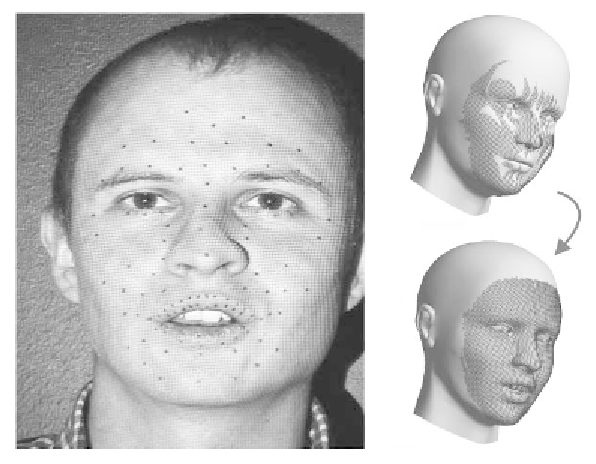Game Development Reference
In-Depth Information
This first step fixes the overall shape of the head and is carried out only once (for
the neutral example face). The result of such process is shown in the right column
of Figure 4: starting from the 3D patch for the neutral face and the generic model
that are shown at the top, the alignment at the bottom is obtained. As can be seen,
the generic model has not yet been adapted to the precise shape of the head at
that point. The second step starts with the transformed model of the first step and
performs a local morphing. This morphing maps the topology of the generic
model head precisely onto the given shape. This process starts from the
correspondences for a few salient points. This set includes the ten points of the
previous step, but is also extended to 106 additional points, all indicated in black
in Figure 5.
After the crude matching of the previous step, most of these points on the
example face will already be close to the corresponding points on the deformed
generic model. Typically, the initial frame of the video sequence corresponds to
the neutral expression. This makes a manual drag and drop operation for the 116
Figure 5. To make the generic head model fit the captured face data
precisely, a morphing step is applied using the 116 anchor points (black
dots) and the corresponding Radial Basis Functions for guiding the
remainder of the vertices. The right part of the figure shows a result.

Search WWH ::

Custom Search